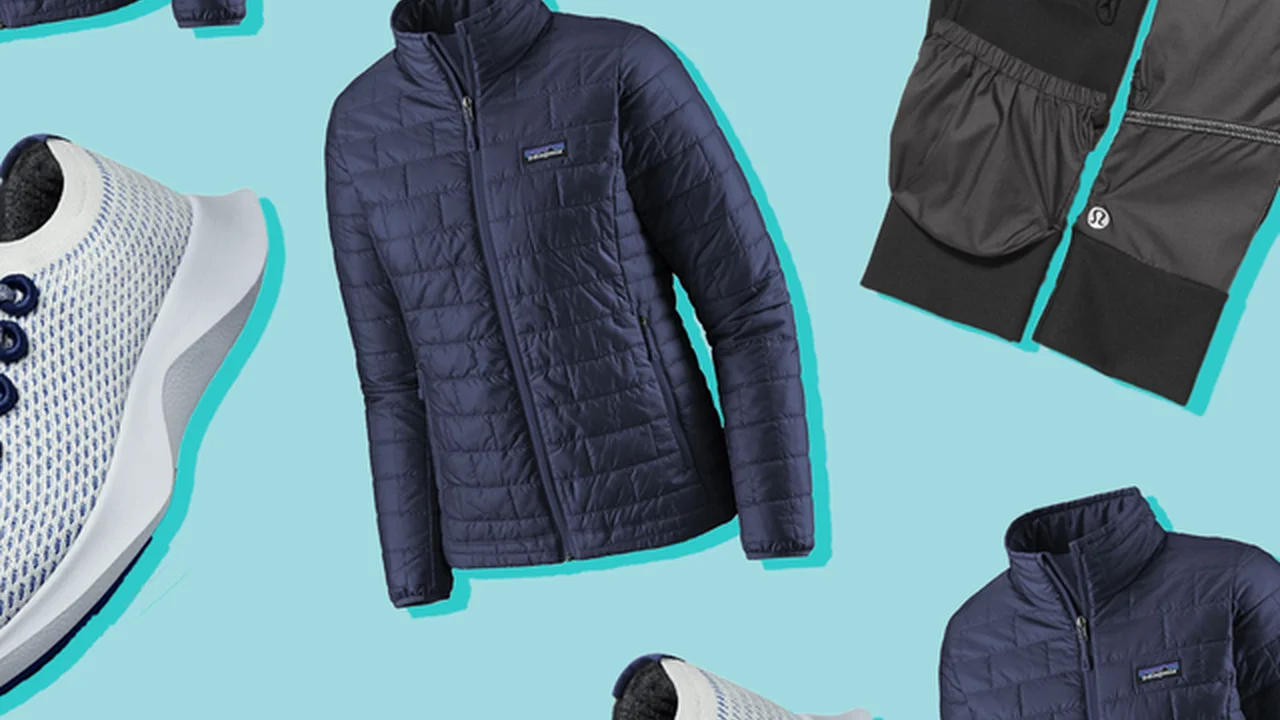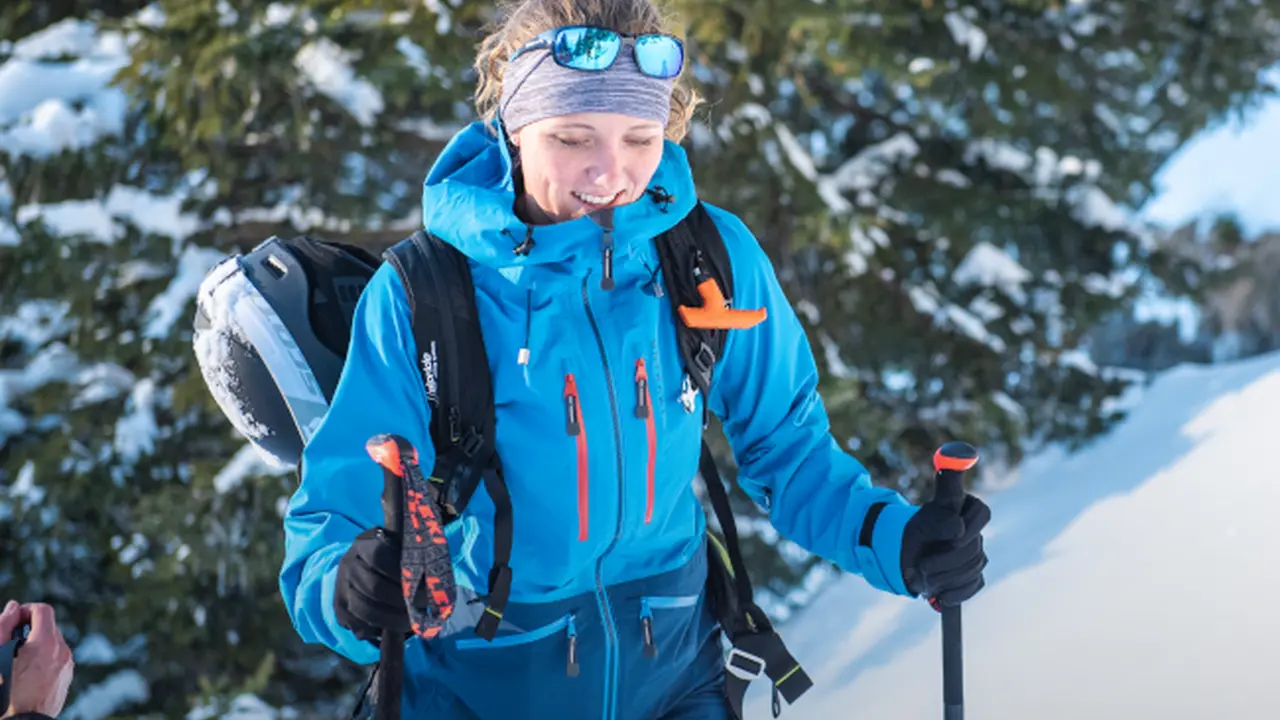
Advanced Snowboard Designs Innovations for Enhanced Performance
Understanding Snowboard Design Fundamentals: Shape, Camber, and Flex
Alright, let's dive deep into what makes a snowboard tick. It's not just a flat piece of wood; there's a whole lot of science and art that goes into crafting these beauties. When we talk about advanced snowboard designs, we're really looking at how manufacturers are pushing the boundaries with three core elements: shape, camber, and flex. These aren't just buzzwords; they fundamentally change how a board rides, feels, and performs on different types of snow and terrain.
First up, shape. This refers to the outline of the board. You've got your classic twin tips, which are symmetrical from nose to tail, perfect for freestyle riders who spend a lot of time riding switch (backwards). Then there are directional boards, which have a distinct nose and tail, often with a longer nose and a stiffer tail, designed to excel in one direction, typically for freeriding and powder. Directional twin boards try to blend these two, offering a symmetrical flex but a directional shape. And let's not forget tapered shapes, where the tail is narrower than the nose, which helps the tail sink in powder, lifting the nose for effortless float. The shape dictates how the board interacts with the snow, how it turns, and how it floats.
Next, camber. This is the profile of the board when it's laid flat on the ground. Traditional camber boards have an upward arc in the middle, with contact points near the nose and tail. This provides excellent edge hold, pop, and stability at high speeds, making them a favorite for carving and aggressive riding. Rocker (or reverse camber) boards are the opposite, with an upward curve from the center to the nose and tail, resembling a banana. This makes them super playful, forgiving, and fantastic in powder because the nose and tail naturally float. Then you have hybrid cambers, which combine elements of both, offering a blend of pop and float, or flat profiles, which offer a more stable, surfy feel. The camber profile is crucial for how the board feels underfoot, its responsiveness, and its performance in various conditions.
Finally, flex. This is how stiff or soft a board is, both torsionally (twisting) and longitudinally (nose to tail). A softer flex board is generally more forgiving, easier to turn, and great for beginners or park riders who want to butter and press. A stiffer flex board offers more stability at speed, better edge hold, and more powerful turns, making it ideal for aggressive riders, freeriders, and big mountain enthusiasts. The flex pattern can also vary along the length of the board, with some boards being stiffer in the tail for more pop, or softer in the nose for better float in powder. Flex is all about how responsive and stable the board feels, and how much effort it takes to manipulate it.
Revolutionary Materials in Snowboard Construction: Carbon, Basalt, and Beyond
Beyond the basic geometry, what a snowboard is made of plays a massive role in its performance. Manufacturers are constantly experimenting with new materials to shave weight, increase strength, improve dampening, and enhance pop. It's not just about wood cores anymore; we're seeing some seriously high-tech stuff going into these boards.
Carbon fiber is probably the most common advanced material you'll hear about. It's incredibly strong and lightweight, offering a significant boost in pop and responsiveness without adding bulk. Boards with carbon stringers or entire carbon laminates feel snappier and more lively. However, too much carbon can make a board feel overly stiff and chattery, so it's all about finding the right balance. Brands like Burton often integrate carbon into their higher-end models for that extra performance edge.
Basalt fiber is another interesting material gaining traction. It's a natural volcanic rock fiber that offers similar strength-to-weight ratios as fiberglass but with better dampening properties. This means a smoother ride, especially at high speeds or in choppy conditions, reducing vibrations and chatter. It's also considered more environmentally friendly than some synthetic fibers. You might find basalt used in boards designed for freeride or all-mountain performance where a smooth, stable ride is paramount.
Then there are various types of fiberglass laminates. While traditional fiberglass is common, advanced designs use triaxial or biaxial weaves, which offer different flex characteristics and torsional stiffness. Some brands even use proprietary blends or unique weaving patterns to fine-tune the board's feel. For instance, Lib Tech's Horsepower construction often incorporates a blend of basalt and other fibers for a unique ride.
Beyond fibers, we're seeing innovations in core materials. While poplar and paulownia wood are common for their strength and lightness, some brands are experimenting with bamboo for its lively pop and sustainability, or even aerospace-grade foam for ultra-lightweight designs. For example, some high-performance boards might use a blend of different wood species strategically placed to optimize flex and strength in specific areas.
And let's not forget about the base materials. Sintered bases, made by pressing polyethylene pellets together, are super fast and durable because they absorb wax better. Extruded bases, made by melting and cooling polyethylene, are easier to repair but generally slower. Advanced bases might incorporate graphite or other additives to further reduce friction and increase speed, especially for racing or high-performance freeride boards.
Cutting Edge Snowboard Shapes and Profiles: Asymmetrical, Tapered, and 3D Bases
The evolution of snowboard shapes and profiles is where things get really exciting. Designers are constantly thinking outside the box to create boards that offer unique advantages for specific riding styles or conditions.
Asymmetrical shapes are a prime example. These boards have a different sidecut radius or edge length on the heel edge compared to the toe edge. Why? Because our bodies are asymmetrical! It's harder to put pressure on your heel edge than your toe edge. An asymmetrical design compensates for this, making heel-side turns feel more natural, powerful, and less fatiguing. Brands like GNU and Lib Tech have been pioneers in asymmetrical designs, with models like the GNU Asym Carbon Credit or the Lib Tech Skate Banana Asym. These boards are fantastic for riders looking to improve their carving and overall control.
Tapered shapes, as mentioned earlier, are becoming increasingly popular, especially for powder and freeride boards. By making the tail narrower than the nose, the tail naturally sinks, lifting the nose out of the deep snow. This creates an incredibly surfy, effortless feel in powder, reducing leg fatigue and making it easier to float. Many dedicated powder boards, like the Jones Storm Chaser or the Burton Fish, feature significant taper. Some boards even combine taper with a swallowtail or fishtail design for even more float and a unique aesthetic.
3D base contours are a relatively newer innovation that's gaining traction. Instead of a flat base, these boards have subtle convexities or bevels in specific areas, often near the nose and tail. The idea is to reduce edge catch, make the board more forgiving, and enhance float in powder by lifting the edges slightly. Bataleon's Triple Base Technology (3BT) is a well-known example, where the side bases are uplifted at the widest points, creating a 'boat hull' effect. This makes the board incredibly playful and catch-free, while still allowing for strong edge hold when engaged. Other brands like Capita are also incorporating similar 3D base designs into their boards, aiming for a more surfy and forgiving ride.
We're also seeing more extreme variations of camber profiles. Beyond traditional, rocker, and hybrid, some boards feature multiple camber zones, or even 'wavy' edges (like Lib Tech's Magne-Traction) that provide multiple contact points for enhanced edge hold on hardpack and ice. The goal is always to optimize the board's performance for specific conditions, whether it's maximizing float in powder, enhancing grip on ice, or providing a playful feel for park riding.
Integrated Technologies and Smart Features: Dampening Systems and Edge Tech
Modern snowboard design isn't just about the core construction; it's also about integrating clever technologies to improve the ride. These often involve dampening systems to reduce chatter and edge technologies to enhance grip.
Dampening systems are crucial for a smooth ride, especially at high speeds or in variable snow conditions. These can range from rubber layers under the bindings to viscoelastic materials strategically placed within the core or laminates. The goal is to absorb vibrations and chatter, making the board feel more stable and less fatiguing to ride. For instance, some brands use Urethane sidewalls, which are more flexible and dampening than traditional ABS sidewalls, leading to a smoother ride and better impact absorption. Look for terms like 'Vibration Dampening Technology' or 'Smooth Ride Tech' in board descriptions.
Advanced edge technology is another area of significant innovation. While a sharp edge is always important, some designs go further. Lib Tech's Magne-Traction is perhaps the most famous example, featuring serrated edges that resemble a steak knife. These multiple contact points provide incredible edge hold on hardpack and ice, making the board feel much more secure in challenging conditions. Other brands have developed similar wavy or corrugated edge designs to achieve enhanced grip without making the board feel overly aggressive.
Some boards also incorporate carbon stringers or rods that run along the edges or through the core. These aren't just for pop; they can also enhance torsional stiffness and edge hold, providing a more direct power transfer from your bindings to the edge. For example, a board might have carbon rods running from the inserts to the contact points, effectively stiffening the area where you apply pressure for turns.
While not as common as in skis, some experimental snowboard designs have even explored active dampening systems or piezoelectric materials that can adapt to changing conditions, though these are often in the prototype phase due to complexity and cost. The trend is towards more integrated, subtle technologies that enhance the ride without adding unnecessary weight or bulk.
Top Picks for Advanced Snowboard Designs: Product Recommendations and Comparisons
Alright, let's get to some concrete examples. When we talk about advanced snowboard designs, we're looking at boards that push boundaries in terms of materials, shapes, and integrated tech. Here are a few standout models that exemplify these innovations, along with their typical use cases and price ranges.
1. Jones Flagship
The Jones Flagship (typically around $600-$750 USD) is a perennial favorite for freeriders and big mountain enthusiasts. It's a directional board with a significant taper and a directional rocker profile (rocker in the nose, camber underfoot, slight rocker in the tail). This design provides incredible float in powder and powerful edge hold on hardpack. It often incorporates basalt stringers for dampening and a sustainably sourced wood core. The Flagship is built for speed, stability, and navigating challenging terrain. It's not the most playful board, but if you're charging steep lines and deep snow, this is a top contender. It's a stiffer board, so it requires a more aggressive rider.
2. Lib Tech Orca
The Lib Tech Orca (usually $600-$700 USD) is a prime example of a volume-shifted, tapered, and directional board that's become a cult classic. It's designed to be ridden shorter than your usual board, thanks to its wider waist and significant taper. This gives it incredible float in powder and a super surfy feel, almost like a shortboard surfboard. It features Lib Tech's signature Magne-Traction edges for superior grip on hardpack and ice, and often uses a blend of basalt and carbon in its construction for pop and dampening. The Orca is incredibly versatile for a powder-focused board, capable of ripping groomers and even handling some freestyle. It's playful yet powerful, making it a fantastic all-mountain freeride option for those who love to slash and carve.
3. Bataleon Evil Twin
The Bataleon Evil Twin (typically $500-$600 USD) is a classic twin-tip freestyle board that showcases Bataleon's Triple Base Technology (3BT). This 3D base contour lifts the side edges at the widest points, making the board incredibly catch-free and forgiving, especially for presses, butters, and landing tricks. It still maintains a traditional camber profile between the bindings for pop and edge hold. The Evil Twin is a medium-flex board, making it versatile for park laps, street rails, and even some all-mountain cruising. It's a great choice for intermediate to advanced freestyle riders who want a playful yet stable board that reduces edge catches.
4. Capita Black Snowboard of Death (BSOD)
The Capita Black Snowboard of Death (BSOD) (around $650-$750 USD) is an all-mountain freeride beast known for its aggressive performance. It features a directional shape with a slight taper and a hybrid camber profile (camber underfoot, rocker in the nose and tail). Capita often uses advanced materials like carbon fiber beams and a proprietary core blend for maximum power, stability, and dampening at high speeds. The BSOD is designed for riders who want to charge hard, carve aggressively, and tackle any terrain the mountain throws at them. It's a stiff, powerful board that demands an experienced rider, but it rewards with incredible performance and precision.
5. Burton Custom X
The Burton Custom X (typically $700-$800 USD) is a high-performance, directional twin board that has been a benchmark for advanced riders for years. It features a traditional camber profile for maximum pop, edge hold, and stability. Burton often incorporates carbon highlights into its construction for an incredibly lightweight yet powerful feel. The Custom X is known for its precision, responsiveness, and ability to handle high speeds and aggressive carving. While it's a directional twin, its stiffness and camber make it more suited for all-mountain charging and powerful freestyle rather than playful park laps. It's a board for riders who demand the absolute best in terms of performance and control.
When choosing between these, consider your primary riding style. If you're chasing powder and big lines, the Jones Flagship or Lib Tech Orca are fantastic. For playful park and freestyle, the Bataleon Evil Twin offers unique advantages. If you want an aggressive all-mountain charger, the Capita BSOD or Burton Custom X are hard to beat. Each of these boards represents the pinnacle of advanced snowboard design in their respective categories, leveraging innovative shapes, materials, and profiles to deliver an unparalleled riding experience.
The Future of Snowboard Innovation: Sustainability, AI, and Customization
So, what's next for snowboard design? The industry isn't standing still, and there are some exciting trends on the horizon, particularly around sustainability, the use of AI, and hyper-personalization.
Sustainability is becoming a huge driver. Consumers are increasingly demanding eco-friendly products, and snowboard manufacturers are responding. This means more use of recycled materials in bases and sidewalls, sustainably sourced wood cores (like FSC-certified wood), and bio-resins instead of traditional epoxy. We're also seeing brands explore natural fibers like flax and basalt as alternatives to fiberglass and carbon, not just for performance but also for their lower environmental impact. The goal is to create high-performance boards with a smaller carbon footprint, from manufacturing to end-of-life. Expect to see more 'green' certifications and transparent sourcing from brands in the coming years.
The role of Artificial Intelligence (AI) and data analytics in design is also growing. While not directly building boards, AI can be used to simulate material properties, optimize flex patterns, and even predict how different shapes will perform in various snow conditions. This allows designers to iterate faster, test more variables virtually, and fine-tune designs before ever cutting a piece of wood. Imagine AI helping to create the perfect camber profile for a specific rider's weight and style, or optimizing the placement of carbon stringers for maximum pop. This could lead to even more specialized and efficient board designs.
Finally, customization and personalization are likely to become more prevalent. While full custom boards are currently niche and expensive, advancements in manufacturing (like 3D printing for certain components) and design software could make it easier for riders to get a board tailored precisely to their body, riding style, and local conditions. Imagine walking into a shop, getting scanned, and having a board designed with a unique flex pattern or sidecut radius just for you. This could move beyond just graphics to truly bespoke performance characteristics. While mass production will always exist, the ability to fine-tune a board for an individual could be the ultimate frontier in advanced snowboard design.
These innovations promise not only better-performing boards but also a more responsible and personalized future for snowboarding. It's an exciting time to be a rider, with new tech constantly pushing the limits of what's possible on the snow.
:max_bytes(150000):strip_icc()/277019-baked-pork-chops-with-cream-of-mushroom-soup-DDMFS-beauty-4x3-BG-7505-5762b731cf30447d9cbbbbbf387beafa.jpg)






